Practical Techniques for Unclogging Bathtub Drains
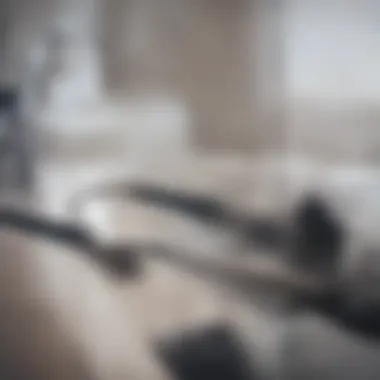

Intro
Clogged bathtub drains are a common issue in many households. Understanding effective strategies to tackle this problem is essential for maintaining not just the functionality of the bathroom but also the overall comfort of your home. This article will cover preventive measures, direct intervention techniques using household items, and maintenance practices that promote long-lasting functionality.
As we delve into these strategies, we will underscore the importance of identifying the root causes of clogs, ranging from hair buildup to soap scum accumulation. Additionally, we will discuss practical tools and methods available to homeowners, helping them approach this challenge with confidence.
The following narrative aims to provide a systematic exploration of these techniques, ensuring clarity and ease of understanding for anyone interested in home maintenance.
Prelude to Bathtub Drain Issues
Understanding bathtub drain issues is fundamental for homeowners and apartment dwellers alike. Bathtub drains experience clogs for numerous reasons, potentially leading to discomfort and damage if left unattended. This section provides a thorough examination of common drain problems and the factors contributing to clogs. By recognizing the signs and understanding their root causes, homeowners can take proactive measures to maintain the functionality of their plumbing systems.
Understanding Common Drain Problems
Bathtub drains can become restricted for various reasons. One frequent issue is hair accumulation, which builds up over time and obstructs the flow of water. Other common elements that contribute to drain problems are soap residue, dirt, and mineral deposits. These substances may combine and create a thick blockage, complicating the drainage process further. Poor installation or older plumbing systems can wear down, allowing leaks and blockages to occur more frequently.
It is vital to understand these common problems to make informed choices about maintenance and repair. Neglecting small clogs can escalate to more significant issues, including water damage and even full system blockages. Identifying these issues early can save time and money in the long run.
Why Bathtub Drains Clog
Several factors lead to bathtub drains clogging. First, the accumulation of hair is significant. Each time a bath is taken, loose hair can wash down the drain and build up in the pipes. This is particularly true in homes with long hair or in families with children.
Another factor is soap scum, which is a combination of soap, body oils, and minerals from water. Over time, this residue hardens, coating the inner surface of the pipes, leading to restricted flow. Additionally, environmental factors such as hard water can contribute to buildup inside pipes, causing clogs to form.
Some contributing factors include:
- Hair accumulation
- Soap residue and body oils
- Mineral deposits from hard water
- Objects accidentally dropped down the drain
Recognizing why drains clog is essential for effective maintenance and unclogging efforts. By understanding these issues, individuals can adopt better habits, such as using drain covers and performing regular cleanings. Consideration of these aspects empowers homeowners to maintain their drains effectively, ensuring the proper functioning of their plumbing systems.
Initial Assessment of the Clog
Before taking any action to unclog a bathtub drain, it is crucial to perform a thorough initial assessment of the clog. This step sets the stage for effective intervention and helps to avoid unnecessary complications. Understanding the specifics of a clog can save time and resources while providing insight into appropriate remedies.
Identifying the Symptoms
The first step in the assessment process is recognizing the symptoms of a clogged drain. Some common indicators include:
- Slow Drainage: One of the most prevalent signs. You may notice that water does not flow down the drain as quickly as it should. This can sometimes be very subtle but is usually the first hint.
- Standing Water: If you find that water pools in the bathtub after use, this symptom clearly indicates a blockage.
- Unpleasant Odors: Foul smells often arise from decaying materials trapped in a clogged drain. This can signal a need for immediate attention.
- Gurgling Noises: Sounds that come from the drain or pipes when water attempts to pass are also obvious indicators of a potential issue.
Recognizing these symptoms early allows homeowners to take timely action before the situation worsens.
Locating the Source
Once you identify the symptoms, the next step is to locate the source of the clog. This requires a methodical approach. Factors to consider include:
- Area of Blockage: Determine whether the blockage is in the drain itself or further down the plumbing system. This could include:
- Type of Material: Knowing what is causing the blockage is essential. Common materials contributing to clogs are:
- Assess the Plumbing History: If the bathtub has experienced frequent clogs, investigate previous problems. This history can provide clues as to whether the issue is recurring due to a larger systemic problem.
- Hair and soap scum near the drain.
- Build-up within the pipes that might require deeper inspection.
- Hair and fur.
- Soap residue and other debris.
- Foreign objects accidentally dropped into the drain.
The initial assessment can mean the difference between a quick fix and a costly plumbing emergency. Taking the time to accurately evaluate the situation helps in identifying not just the clog, but the best strategy for resolution.
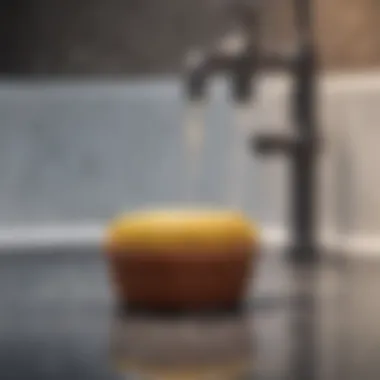
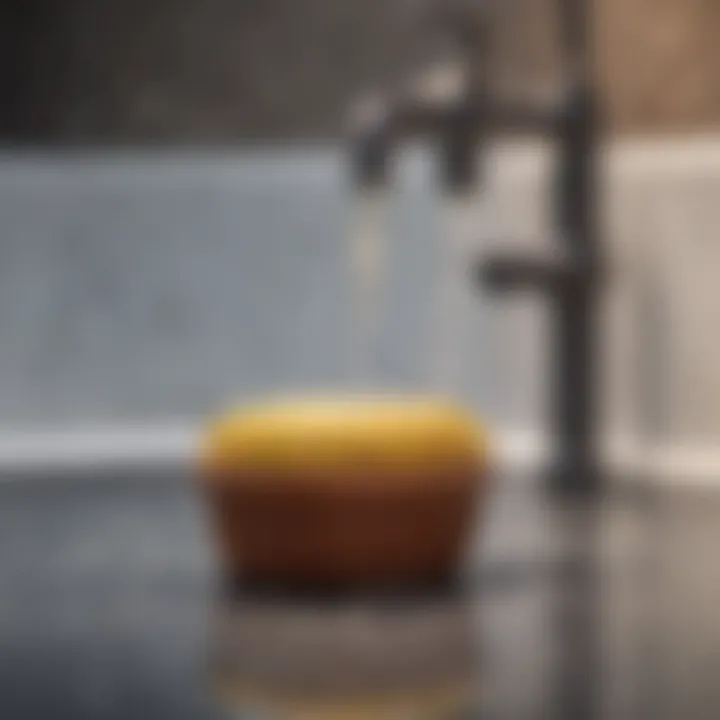
Preparation for Clog Removal
Before diving into methods to unclog a bathtub drain, preparation is critical. A well-planned approach ensures the process is efficient and minimizes the risk of further complications. Identifying the tools and safety measures is paramount. This not only saves time but also enhances overall effectiveness in removing clogs.
Gathering Necessary Tools
Having the right tools on hand aids in tackling clogs efficiently. The essentials typically include:
- Plunger: A basic yet effective tool for most drain blockages.
- Drain Snake: Useful for reaching deeper clogs that are beyond the reach of a plunger.
- Baking Soda and Vinegar: These common household items can dissolve minor obstructions effectively.
- Hot Water: Helpful in breaking down grease and soap build-up.
- Bucket: Used for catching any excess water during the unclogging process.
- Gloves: To protect hands from harsh chemicals or bacteria.
Having these items readily available can make the unclogging process smoother. It eliminates the need to search for equipment during critical moments, potentially increasing frustration.
Safety Precautions
Safety is an often-overlooked aspect when dealing with clogged drains. It's essential to take basic precautions to avoid injuries or accidents. Here are some key safety measures:
- Wear Protective Gear: Always use gloves to protect your hands. If using chemical drain cleaners, goggles and masks are advisable.
- Ventilation: Ensure the area is well-ventilated, especially when using chemicals.
- Avoid Mixing Chemicals: Combining different drain cleaners can create hazardous reactions. Always follow the instructions on the label and use one product at a time.
- Secure the Work Area: Keep the area tidy to avoid slips and falls. Remove any obstacles near the bathtub.
Taking these precautions not only safeguards one’s health but also contributes to a more efficient unclogging procedure. Being prepared enhances the efficacy of the methods chosen, making for a smoother experience.
DIY Unclogging Techniques
DIY unclogging techniques are critical for maintaining the efficiency of your bathtub drains. Often, homeowners encounter clogs that they believe require professional intervention. However, many situations are resolvable without calling a plumber. Knowing the DIY methods available can save you both time and money.
These techniques empower individuals to take control of their home maintenance. One benefit is the accessibility of common household items that many people already own. This accessibility often leads to quicker resolutions of minor clogs. Additionally, engaging in these methods can minimize reliance on harsh chemicals that can harm plumbing systems and the environment.
When employing DIY techniques, understanding the nature and extent of the clog is essential. Some blockages may require simple solutions, while others may indicate deeper plumbing issues. At all stages, it is important to consider your own safety and the safety of your plumbing system. Now let’s examine effective methods to clear bathtub drains.
Using Baking Soda and Vinegar
Baking soda and vinegar provide a simple, yet effective method for unclogging drains. This combination creates a natural reaction that can help break down minor obstructions. The alkaline property of baking soda works to loosen debris, while vinegar aids in dissolving grime.
Steps to use this method:
- Measure half a cup of baking soda.
- Pour the baking soda directly into the drain.
- Follow with half a cup of vinegar.
- Let the mixture sit for about 30 minutes.
- Rinse with hot water.
This technique not only unclogs drains but also helps to maintain freshness. It is a recommended routine for regular maintenance, as it prevents build-up over time.
Employing a Plunger
The plunger is a widely recognized tool for clearing clogs. It creates a vacuum effect that dislodges blockages within the piping. Selecting the right type of plunger is crucial; a cup plunger is best for sinks and bathtubs, while a flange plunger works well on toilets.
How to effectively use a plunger:
- Ensure there is enough water in the tub to cover the plunger cup.
- Place the plunger over the drain, creating a seal.
- Push down and pull up with steady, forceful motions for about 30 seconds.
- Check if the water drains properly. Repeat if necessary.
Using a plunger requires physical effort but often yields satisfactory results quickly.
Applying a Drain Snake
A drain snake, or auger, is a handy device designed for deeper clogs. It consists of a flexible metal wire which can reach into pipes to dislodge or remove obstructions. This method is suitable for stubborn clogs that other techniques cannot clear.
Steps for using a drain snake:


- Insert the end of the snake into the drain.
- Turn the handle clockwise to engage the auger.
- Push it deeper until resistance is felt, indicating it has reached the clog.
- Rotate and push gently to break up the blockage.
- Pull the snake out carefully, possibly pulling out debris.
This method is effective but requires some practice to master. It’s worth noting that improper use can damage drains, so proceed cautiously.
Hot Water Flush Technique
The hot water flush technique is straightforward yet effective for minor clogs. It works by melting away grease and other materials that build up over time. This approach is particularly useful for organic matter and soap residue, common culprits in bathtub drain problems.
To perform this technique:
- Boil a kettle of water.
- Slowly pour the hot water down the drain in stages.
- Allow a few moments in between each pour to let the hot water work through the clog.
This technique should not be used on all types of piping, such as those made from PVC, which can be adversely affected by extreme heat. However, it remains a good option for many standard drain systems.
Chemical Methods for Clog Removal
Chemical methods for unclogging bathtub drains have become a common choice for many homeowners. These methods often promise quick results with minimal effort. In the context of this article, understanding how to effectively use chemical drain cleaners can save time and frustration when facing stubborn clogs. However, it is vital to differentiate between their benefits and the potential risks involved.
Overview of Drain Cleaners
Drain cleaners typically come in two main types: liquid and powder. Liquid solutions are often preferred for their ease of use. Products such as Drano or Liquid-Plumr are popular due to their strong chemical composition designed to dissolve hair, grease, and soap scum. These cleaners can be effective when used properly.
It is essential to follow the instructions on the packaging. Usually, pouring the recommended amount down the drain and allowing it to sit for a period allows the chemicals to do their job. However, it’s worth noting that not all drain cleaners are created equal. Some may contain harsh chemicals that can damage your plumbing system over time.
Key Points about Drain Cleaners:
- Effectiveness: They can clear clogs quickly.
- Ease of Use: Most are simple to apply.
- Risks: Potential damage to pipes and risks to health.
Environmental Considerations
When selecting a drain cleaner, it is crucial to consider the environmental impact of the chosen product. Many standard chemical drain cleaners are formulated with harmful ingredients like sodium hydroxide or sulfuric acid. These components can contaminate water sources and pose risks to local ecosystems.
Opting for eco-friendly alternatives is advised when possible. Many brands now offer biodegradable drain cleaners that use natural enzymes or bacteria to break down waste. These products are often safer for both plumbing systems and the environment. Not only do they reduce chemical exposure, but they also minimize the risk of plumbing damage, making them a prudent choice for sustainable home maintenance.
"Choosing eco-friendly products benefits your home and the environment, demonstrating responsibility over our natural resources."
Consider these factors when making your selection:
- Biodegradability: Favor products that are easy on the environment.
- Material Safety: Avoid harsh chemicals that could damage your plumbing.
- Effectiveness: Assess if the product has a track record of performance.
Professional Help
Despite the numerous DIY methods available for unclogging bathtub drains, there are times when professional assistance becomes necessary. It is essential to recognize when the situation exceeds your skills or equipment. Using a professional service can prevent further damage to your plumbing system and save you time in the long run.
When to Call a Plumber
Several indicators suggest that it might be time to contact a plumber. If you have tried multiple unclogging techniques without success, it could imply a deeper issue within your plumbing system. For instance, persistent water backup, slow drainage, or foul odors can indicate significant blockages or plumbing issues beyond simple clogs.
Moreover, if you notice that multiple drains in your home are experiencing problems simultaneously, this may signify a larger issue, such as a problem with the main sewer line.
Calling a professional not only addresses the immediate problem but also helps in identifying potential risks that could lead to future clogs or plumbing failures.
Expected Costs of Professional Services
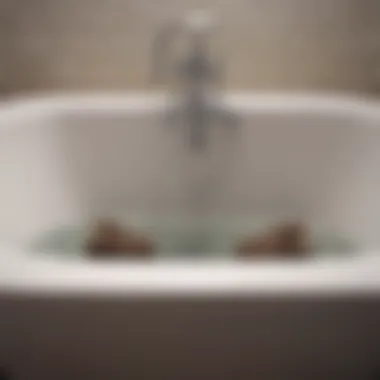
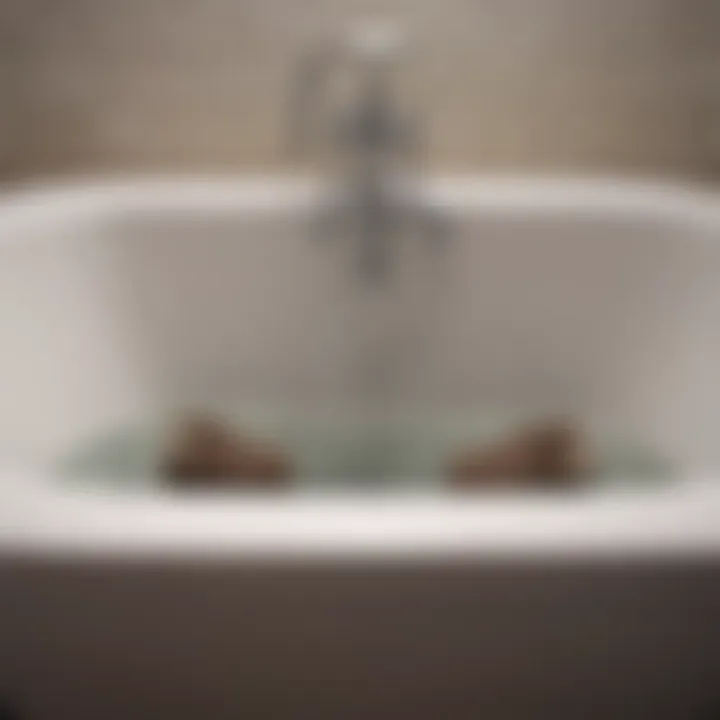
The prices for professional plumbing services can vary widely depending on factors such as the extent of the clog, geographic location, and the specific plumbing service provider. On average, homeowners can expect to pay between $100 to $300 for a straightforward drain cleaning service.
However, if the job involves more complex tasks, like a video camera inspection to locate deeper issues or if extensive repairs are needed, costs can rise accordingly. It's advantageous to get multiple quotes from different plumbing companies to ensure fair pricing.
Consider factors such as quality of service, warranty of work, and reputability when selecting a plumbing service.
Investing in professional help is often a smart choice, especially when the risks of further damage to your plumbing are high. The assurance of professional expertise can bring peace of mind and guarantee a thorough approach to resolving the plumbing issues.
Preventive Measures
Preventive measures play a crucial role in maintaining the efficiency of bathtub drains. By integrating simple strategies into regular home maintenance practices, one can significantly reduce the frequency of clogs and the need for cumbersome removal techniques. These measures not only save time and effort but also preserve the overall health of your plumbing system.
Regular Cleaning Routines
Establishing a regular cleaning routine for your bathtub is essential for preventing clogs. Hair, soap scum, and other debris accumulate over time, eventually leading to blockages.
Here are some effective practices:
- Weekly drain check: Remove hair or larger debris from the drain. This can be done using simple tools like a pair of tweezers or a drain brush.
- Monthly deep clean: Use a mixture of baking soda and vinegar monthly to clear any minor buildup and ensure smooth drainage. After pouring the mixture, let it sit for 30 minutes before rinsing with hot water.
- Regularly clean surfaces: Ensure all surfaces around the tub are free from soap residue and other buildup, as they can easily wash into the drain.
Install Drain Screens
Installing drain screens can be an effective preventive measure. These screens serve as a physical barrier, trapping hair and larger particles before they enter the plumbing system.
Key benefits include:
- Easy installation: Most drain screens are simple to fit over existing drains without the need for professional help.
- Reduced clogs: By catching debris, drain screens significantly minimize the risk of blockages.
- Maintenance made simple: Screens are easy to remove and clean, promoting a hygienic bathtub environment.
Mindful Product Use
The products you use in the bathtub greatly influence the efficiency of your drains. Avoiding harsh chemicals can extend the life of your plumbing. Consider these tips:
- Choose biodegradable soaps: These products break down more easily, preventing soap scum accumulation.
- Limit use of oils and lotions: These substances can congeal and lead to clogs over time.
- Read labels: Make sure that any product used is safe for plumbing systems to prevent damage.
By adopting these preventive measures, you can maintain a clear and efficient bathtub drain, significantly reducing the risk of future clogs.
Following these three preventive guidelines will enhance not only the functionality of your drains but also improve the overall bathing experience.
Closure
Summary of Techniques
A summary of the techniques discussed includes:
- Using natural ingredients like baking soda and vinegar, which are not only effective but also environmentally friendly.
- Employing a plunger, which remains one of the most straightforward tools to use in drain clearing.
- Utilizing a drain snake to reach deeper clogs that other methods might not resolve.
- Performing hot water flushes to dissolve grease or soap buildup over time.
These methods are grounded in practicality and can be conducted with minimal resources. Knowing these options equips homeowners with skills necessary to act in a timely manner.
Encouraging Proper Maintenance
To prevent future clogs, proper maintenance is essential. Consistent cleaning routines can significantly reduce the likelihood of debris accumulation. Consider simple tasks such as:
- Regularly cleaning the drain with mild soap to remove residues that accumulate after each bath.
- Installing drain screens which can trap hair and small particles, preventing them from entering the pipes.
- Being mindful about the products used in the bathtub may also help. Avoiding excessive oils or soaps that can lead to buildup is advisable.
Incorporating these practices can foster long-lasting functionality of bathtub drains.
Regular maintenance is not just about repair; it's about ensuring long-term efficiency in your home.
The goal is to create a proactive approach towards drain care, instead of waiting for issues to arise. By prioritizing these preventive measures, individuals can save time and avoid the inconvenience of clogged drains.















